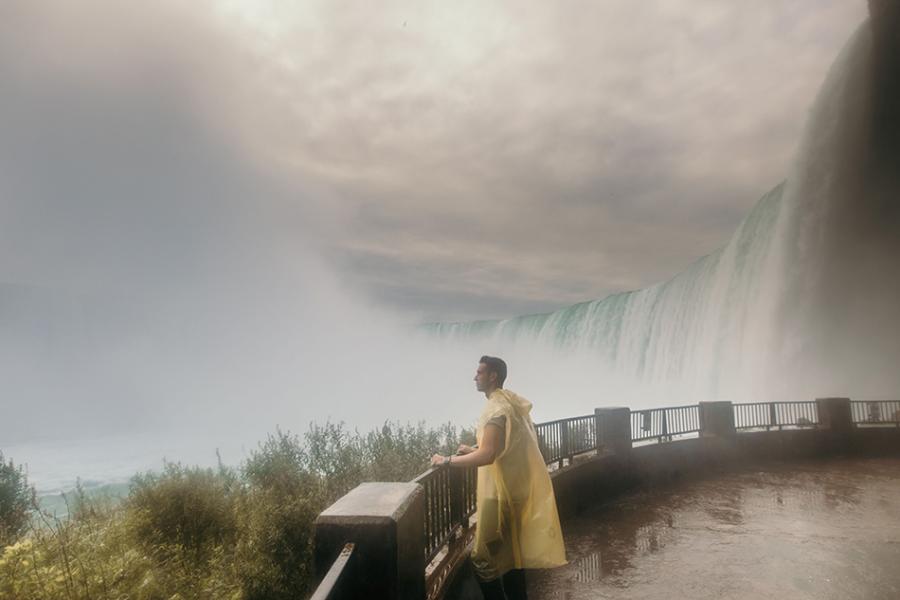Changing Guest Demographics in a Pandemic World
According to David Adames, CEO of Niagara Parks, U.S. visitors accounted for 30% of the traffic at the Niagara Falls attractions operated by the Canadian agency before COVID-19 took hold. But American tourists had an outsized impact on the bottom line and were responsible for 50% of the revenue. When the pandemic hit and the border closed, the percentage of U.S. visitors and the dollars they spent immediately dropped to 0% and 0%, respectively. Ditto for international visitors.
“It was so frustrating,” Adames says. “We can stand at the Horseshoe Falls on the Canadian side and literally see our friends at the New York state park.” They were so close, yet so socially distanced by decree in the early stages of the pandemic.

The U.S.-Canada border has since reopened, and some international travelers have returned to the region. But, as is the case in other tourist destinations, COVID-19 still holds a grip, and the demographic makeup of guests has not returned to pre-pandemic levels.
Lured by the majesty of the falls, about 14 million visitors flocked to the Niagara area prior to the pandemic. Some 5 million of them experienced Niagara Parks attractions, including Journey Behind the Falls, the Butterfly Conservatory, and the Niagara’s Fury 4D motion theater. In 2020, those numbers dropped precipitously as the market was confined to Canadian guests.
In response, Niagara Parks shifted its marketing strategy and focused on digital promotions such as social media and Google Ads campaigns to target local visitors. Fast forward to 2022, and Adames says the agency has modestly increased its ad spend as U.S. and, to a lesser extent, international visitors have started to return. The CEO estimates that Americans now account for 15% of the revenue, whereas guests from other countries, which used to take a 20% slice of the revenue pie, barely warrant a sliver now.
Tour groups, once a mainstay at the tourist hotspot, have been slow to return, and those that do make the trek tend to be smaller. Likewise, convention business is starting to trickle back. Still, Adames sees cause for hope, noting that Niagara Parks had its best sales results in three years over Memorial Day weekend. “That underscores the importance of our American visitations,” he says. A new attraction that opened this year, the Niagara Parks Power Station, is helping to generate interest.

In Florida, international visitors are drawn to Madame Tussauds Orlando and the Sea Life Orlando Aquarium. More than 50% of the guests at the wax museum have consistently been from other countries, with Brazil being a standout, since opening in 2015, says Jade Sparks, marketing manager for the Merlin Entertainments attractions. They disappeared, of course, along with domestic overnight visitors amid the COVID-19 crisis. With such a reliance on customers that were unable to visit, business wasn’t quite as grim as anticipated, however.
“We found organic demand among locals,” Sparks says. “We were shocked. People were looking to do things.”
The Museum of Illusions, which, like the Merlin attractions, is located at Icon Park in Orlando, had a similar experience. Opened in January 2021, it had been anticipating that up to 60% of its guests would be international with perhaps another 30% long-haul visitors from the U.S. Marc Gregory Tipton, the attraction’s sales and marketing director, had planned to target those groups, as well as tour operators and travel agents. Instead, the museum’s initial visitors were all day-trippers.
As new kids on the block offering a fun spin in grim times, Tipton found that the museum’s story resonated in the media and turned his attention to public relations. The word got out, and locals flocked to the edutainment destination to interact with the baffling illusion exhibits.
“We had over 200,000 visitors through the end of 2021, a large portion of which were from the area,” says Tipton. Even more impressive? “We were relying on couples and small families.”

Both Tipton and Sparks say that the domestic market, including those flying into Florida, has improved considerably. But visitors from other countries have not yet returned in large numbers. Tipton says the mix is less than 10% international, although he is starting to see pockets arrive from places such as Colombia, as travel restrictions begin to lift and people make vacation plans.
Tour groups have been slow to return to the Orlando attractions, but Sparks is encouraged that group sales have doubled this summer compared to last year. “We’re starting to put marketing strategies back into place for this fall to reengage with the group audience,” she says.
The attractions are confident that international travelers will return and are planning accordingly. Madame Tussauds, for example, recently added two Latin music artists to its wax figure collection. Sparks notes that it’s a way to remain engaged with the critical audience and to encourage them to visit when they can come back.
As for when the demographics will return to something resembling “normalcy,” Niagara Parks’ Adames predicts that U.S. visitation will get there as early as 2024. It might take until 2025 or 2026, however, for the rest of the international market, he says.
Regardless of when the more far-flung visitors return, the attractions reps say they have learned some valuable lessons about their local markets during the pandemic.
“We are grateful for our neighbors who supported us,” says Tipton. “We won’t stop paying attention to them.”
